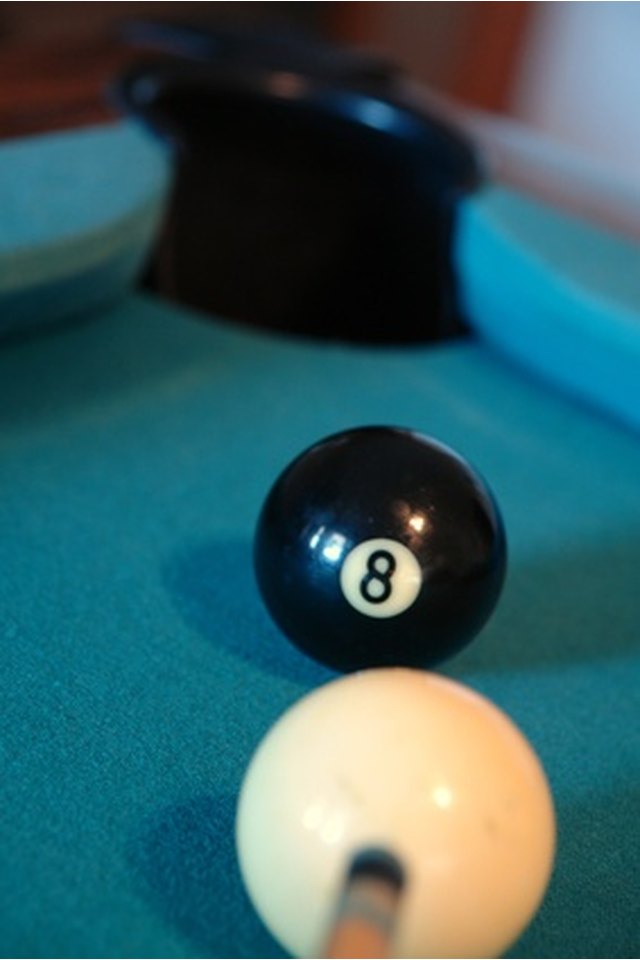Pool Table Rules & Regulations

Pool is a game of strategy that requires skill and planning. There are few rules, but the game takes time to master. Knowing what will lose you a turn is a very important part of the game so that you can be sure to get as many attempts as possible.
Pre-game
When racking the balls, you always use the triangle. The spot on the table at an end is called the foot spot. The apex, or top, of the triangle is put on the foot spot.
Breaking
When starting a game, a person uses the cue and hits the cue ball at the racked balls. If the person does not pocket a ball, then the next player has a chance. Whatever ball is pocketed, solid or striped, will be the balls you attempt to hit in for the rest of the game.
Playing
The turns alternate between players. Each has a chance to hit a ball into the pocket. The cue ball is hit by the cue into the other balls to pocket them. The cue ball is never moved by hand unless it is scratched. Scratching means hitting the cue ball into a pocket. When this happens, the other player gets to place the cue ball behind the head line on the table. This is an imaginary boundary indicated by to dots on either side of the table near the head. The eight ball is hit into the pocket after all of a player's balls are pocketed. If the eight ball is hit into a pocket ahead of time, then the player automatically loses the game.
Fouls
Some of the fouls a person can commit in billiards are interference rules. If anything touches a ball that is in motion, that is interference. For example, if a person is hanging over the table, and a bit of clothes get in the way, that is interference and the other player will get to hit. If a person misses the cue ball entirely, that will make him lose his turn, as will pushing the cue ball instead of hitting it. If the ball is hit and jumps off the table, this will result in a loss of turn also.
Writer Bio
Natalie Saar began writing professionally at the age of 19. She majored in journalism and her writing has appeared in the magazine "Generation WHY" as well as "The Clause" newspaper. Saar graduated from the University of California, Riverside with a Bachelor of Arts in media and cultural studies.
